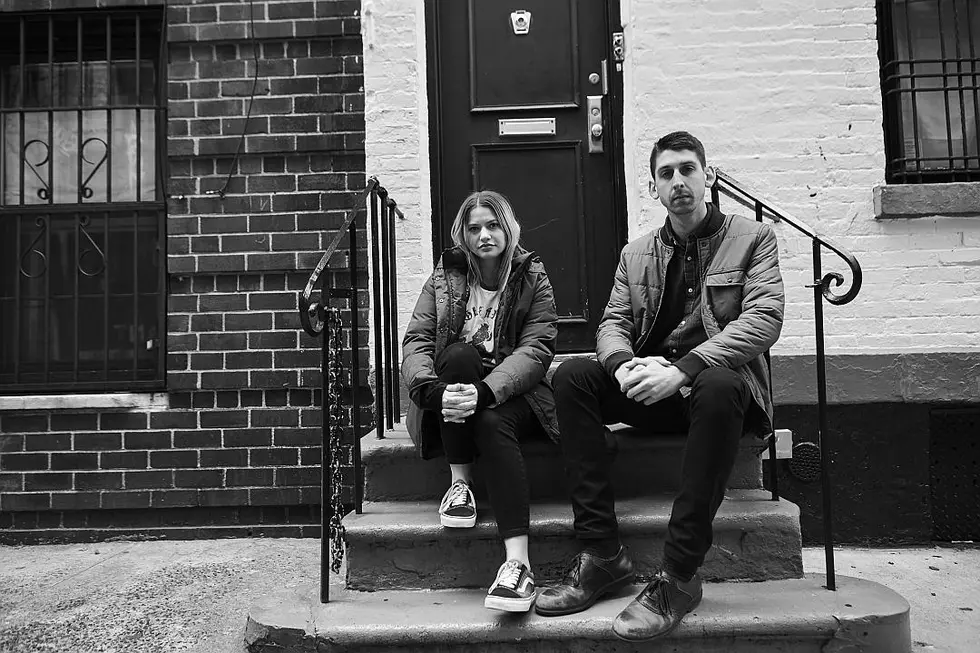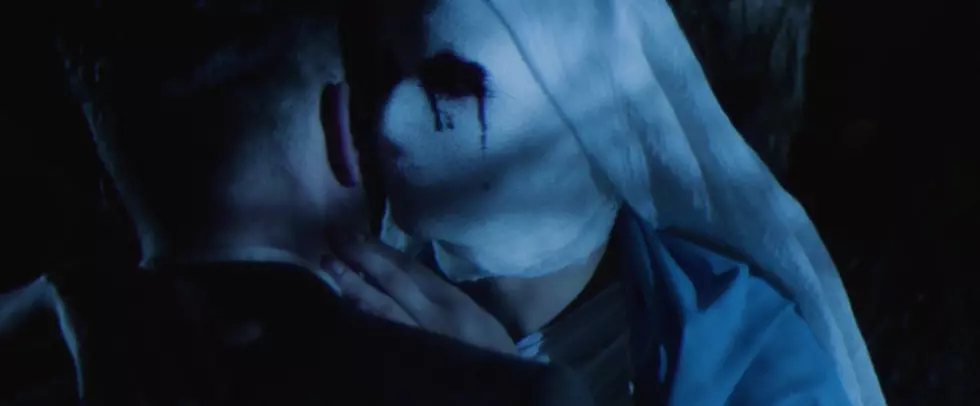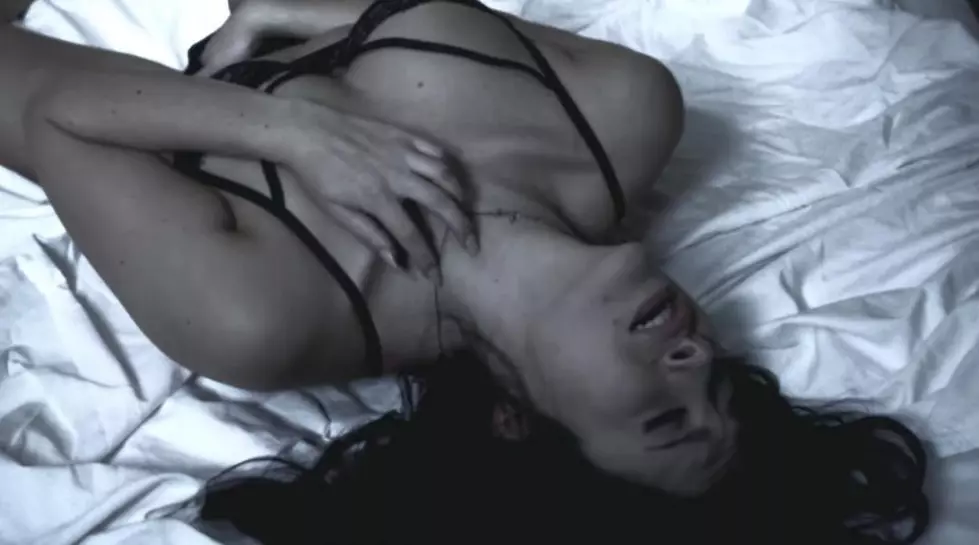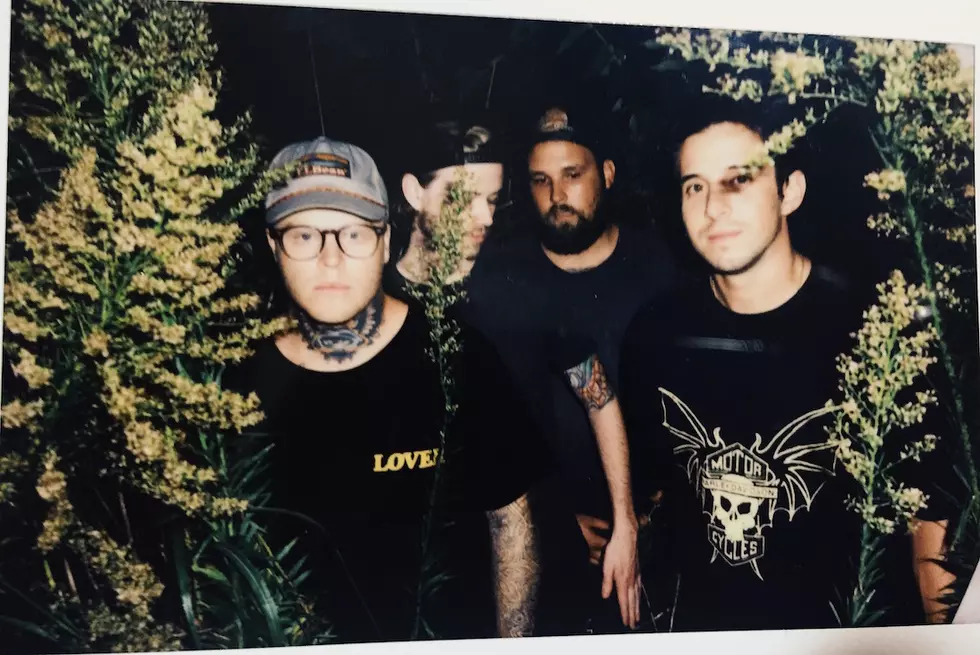
Mary Timony Airs Out Helium’s Mystical ’90s Classics
From her whimsical solo albums in the 2000s to Wild Flag — the ass-kicking supergroup she founded with Carrie Brownstein, Janet Weiss and Rebecca Cole — and her current band, the riff-ripping Ex Hex, Mary Timony has been a constant and inspirational presence in American indie rock since the early ’90s. However, it was her six-year tenure as the leader of mystical indie rockers Helium that earned her the reputation as one of the scene’s most inventive musicians. In that short span, Helium released two full-lengths, along with three EPs of dreamy, peculiar and ingenious music that never seemed to fit neatly inside a box.
Formed in Boston in 1992, Helium underwent some lineup changes before settling on Timony (guitars), Shawn Devlin (drums) and Ash Bowie (bass) during the making of their seminal 1995 debut, The Dirt of Luck. Timony’s lyrics held a resolute feminist stance that was bolstered by her unorthodox guitar playing, which utilized every inch of the instrument to patch together impracticably jaw-dropping riffs. The band shifted their focus with subsequent releases, the semi-literal No Guitars EP and their sophomore album, The Magic City. The latter found Timony writing from more of a mystical perspective, incorporating more keyboards and piano into the mix to give it a feeling of enchantment. But like all good ’90s bands, Helium weren’t meant to last, and they called it a day in 1998.
Now nearly 20 years after their final release, Matador has reissued both Helium albums (No Guitars is included with The Magic City), along with an odds ‘n’ sods compilation called Ends With And, which collects various tracks from the band’s EPs and singles, as well as lost demos. CLRVYNT spoke to Timony on the phone from her home in Washington, D.C., about resurrecting her pivotal old band.
So, what made you decide to reissue the Helium records?
I talked to Matador off and on about it, and then they decided now was a good time to do it. Originally, all I wanted was to make the records available again on vinyl, because I heard people couldn’t find them. They’ve been out of print on vinyl. But then the idea came up that there was all of this other Helium stuff that was hard to find, like the EPs and singles, so we thought about releasing a third record with all of it. Plus, there are demos and stuff people have never heard before. Some of the stuff on Ends With And I haven’t heard in over 20 years or something. So, it was a fun treasure hunt looking for all of that stuff.
You mention the compilation, Ends With And, as well. How did you come up with that album?
There was some stuff I didn’t put on. It wasn’t a hard decision because some of the songs I was never that happy with at the time, and I’m still embarrassed of it. But there are a few people who were upset about the track list. After the album was announced, some fans on message boards complained that some songs weren’t included. I don’t think most people will care, though. The songs that were favorites of mine were from the 7”s that Ash [Bowie] and I released under the name Led Byrd, so I’m pretty stoked about that.
You’re reissuing the two albums. Is there one album you prefer more than the other?
They’re very different. There are things I like and things I regret about each of them. I don’t know which one I would choose. I haven’t totally worked out the set, but I think we’ll do half of both records at the shows.
I don’t think I ever heard why Helium broke up. What happened?
It was pretty typical. Being in a band is hard work if you want to do a good job at it. We never really toured enough, so there was normal, everyday stress of not making enough money. And Ash and I were a couple, so when we broke up, it added a new level of difficulty. Helium never officially broke up. We wanted to make another record, but logistically it became too much to take on.
In the liner notes, Ash talks about how we got into this medieval theme, kind of as a joke. It was funny to us, but not necessarily funny because we were into that stuff. So, we had some photo shoot where we didn’t know what would happen, and we had to dress in these medieval costumes. Suddenly, we were called a medieval band, and Ash pointed out that this would break up any band. [Laughs] So, I guess it was time for us to break up.
I was reading some old interviews you gave where you were speaking up for women’s roles in music and gender issues. We’re talking about those topics every day now 20 years later. Has much changed in your opinion?
Absolutely. In the ’90s, there were fewer girls playing in bands. It felt much more of a thing, like we were truck drivers or auto mechanics. It was weird. We were doing something that wasn’t expected of us, so it required a level of awareness. People were assuming particular things. Like, I’d walk into a music store or a club we were playing, and the people working at those places assumed I didn’t know anything about music. And the whole riot grrrl thing was going on. That wouldn’t happen now. I was in D.C. [at] that time playing in Autoclave, and we practiced in the same house as Bikini Kill. We were kind of part of that scene, but I feel like I also watched it objectively because I never felt like a true punk rocker. Like, I didn’t feel like I fit in with that world. I actually don’t think I fit in anywhere. But that was definitely a reaction to hardcore and metal, these very masculine music scenes. Now it’s really, really different. There are so many women playing in bands now. It’s become a very normal thing, which is what we were all shooting for. But being a girl playing music was a statement. It meant something to people.
I think a perfect example of how things have changed is Beavis and Butt-head. They said some pretty horrible things about Helium that MTV would never allow today. What were your feelings about your videos appearing on that show?
You kind of had to go with it back then, because a lot of people found out about the band from that show. But I do know what you’re saying. You make a good point. I wonder if that would happen now. That’s what feminism in music in the early ’90s was dealing with. But women were also baiting people and trying to shock them to cause some sort of reaction. If you look at Liz Phair or Courtney Love, they were shocking or agitating people with their lyrics or dress or saying things onstage to get a reaction, I think to stir up ideas like, “Why isn’t it okay for women to be in bands?” That’s where I was coming from, and I hear that in a lot of feminist music from the ’90s. When I look at The Dirt of Luck, I definitely see that. I was trying to portray all of these different roles, like in a Cindy Sherman kind of way, and try to be a little shocking.
You mean with a lyric like, “The only good man is a dead man”?
Yeah, exactly. I was writing about my own experience in the world and my own experience as a woman in the world and what feminism meant to me. There were all of these roles put on me. Some of it was also about being a younger person entering the world, trying to figure out what all of this shit is.
You mentioned how you were angrier writing The Dirt of Luck, and then things changed with The Magic City. What changed for you?
I felt like I communicated what I needed to communicate with The Dirt of Luck. A lot of times as a musician I definitely go through phases of what I think are interesting or edgy or sounds I want to pursue. So, I think with The Dirt of Luck, we played those songs on tour and then entered a new phase. Helium had a medium level of success, but I was a young kid and I didn’t really like that. It was stressful being on tour and dealing with a business, and I think I retreated into my own little world. We stopped touring a lot, and I never really left my apartment much, so The Magic City was more about retreating from the world and making music that other people weren’t making. It was a lot weirder than The Dirt of Luck. I don’t think it fit into the landscape at all. Now when you hear it, I feel it sounds more normal, but at the time, it felt weirder.
I think it was viewed more as prog-influenced.
I guess you can hear some of the softer King Crimson stuff in there. It had classic rock influences, I guess. But really it was me just getting away from the world. Part of it was also about me getting away from political themes. I felt people didn’t understand what I was trying to say, and it just got complicated and icky. It became pretty tiring having to talk about being a girl in a rock band all of the time. I felt misunderstood and just wanted to write songs in my bedroom. Also, Ash and Shawn and I collaborated with me a lot more. Ash had a bigger role in The Magic City because he joined halfway through writing The Dirt of Luck.
My favorite song on The Magic City has always been “Medieval People,” with the harpsichord riff, and from out of nowhere comes those explosions. It was just so unexpected.
Yay! I went through this period of extreme feelings. Like, I got sick of playing guitar, so I just started playing keyboard. Actually, Ash wrote and recorded that song. One of my favorite things about that track is the explosions were done with a microphone and a reverb tank. Ash just went [makes exploding noise] into a microphone. It was just this really cool, big bomb explosion. When he joined the band, he really pushed it into another direction. He wouldn’t settle for it sounding derivative or normal or boring. He made sure everything sounded original or we wouldn’t use it. I think he’s a genius songwriter. His ideas are so, so good. He kicked my ass in terms of making things good. He was always super creative.
The No Guitars EP is included with The Magic City vinyl. What was the deal with calling it No Guitars? Because there are guitars …
That happened during the period where I had burnt out on distortion from The Dirt of Luck. I couldn’t think of any ideas on the guitar anymore, so that’s where it came from. There are some guitars on it, but not a lot. There aren’t a lot of drums either. I just started writing songs on a keyboard and went for it. Luckily, my bandmates let me do it.
What do you remember from doing Lollapalooza?
It was a bit intense. They don’t do festivals that travel anymore. It was crazy. But it was a lot of fun. There weren’t a lot of festivals then. Now it’s an entire industry. But Lollapalooza was really the first over here. Europe had lots of them, but we never played any. But yeah, Superchunk played. I remember hanging out with those guys. Sonic Youth and Pavement were on the main stage. Watching them was awesome. Beck was there, too. I do remember Allen Ginsberg walking around backstage and hanging out with Thurston Moore. I do remember playing in Detroit, and there was this kid in the front row giving us the finger the entire set. [Laughs] The whole time we played, he just gave us the finger! That’s one of the most awkward stage moments. Hole also played, and I remember going to the Black Cat in D.C. Courtney Love dumped water on all of these people’s heads. There was some drama. I just remember it being a lot of fun.
So, the tour is called “Mary Timony Plays Helium,” which is different from Helium.
It’s always good to do shows to promote the records. That’s just the standard for how those things work. I originally wanted to do an actual Helium reunion. Shawn was super on board, but Ash just couldn’t do it. I tried and tried and tried to convince him by emailing and calling him, but he just can’t leave his job and his family. He doesn’t play shows very often anymore. Logistically, it was too much of a hassle. So, it made more sense to go out as just Mary Timony and play the shows. Maybe at some point we will do a full-on Helium reunion.
Joining you are members of Hospitality?
Yeah. Brian Betancourt and David Christian. They’re great. It should be fun.
How has it felt revisiting these songs? Do you remember how to play most of them?
It hasn’t been as hard as I had feared. One of the things I do in my spare time is teach guitar, and that involves playing a lot of covers. So, it kind of felt like I was learning covers while I figured out the songs. But it was also weird, because it felt like I should know them better than I did. Some guitar parts I couldn’t remember at all, so for a couple of them I had to go online and watch old live videos. YouTube is making it possible for all of these ’90s bands to reunite. [Laughs] Thank God someone put those videos up there!
Have you ever taught any of your students how to play any Helium songs?
No, I don’t really bring myself into my teaching. I’ve never really told any of my students about my music. Some of them find out about it and are really supportive, which is sweet. But it would feel weird to say, “Here’s my music. Let’s play it.” I approach it by using the method books and learning classic rock songs. It’s more about teaching it the way I learned how to play. But if someone came to me and asked me to teach them one of my guitar parts, I would be flattered and teach them.
Is there a future for Helium, or is this just for fun?
Right now, the only plan is to put the reissues up. Helium never technically broke up, though, so we’ll see what happens. Maybe in 10 years we’ll make a record. For now, I’m just concentrating on putting the records out and playing these shows. I’m having a blast playing with Brian and David. They’re incredible musicians. And Ex Hex is gonna start working on a new record this summer, after I’m done with the Helium tour.
“MARY TIMONY PLAYS HELIUM” on TOUR
Jun. 6 — Washington, DC @ Rock & Roll Hotel
Jun. 7 — Philadelphia, PA @ Boot and Saddle
Jun. 8 — Brooklyn, NY @ Northside Festival, Rough Trade
Jun. 9 — New York, NY @ Mercury Lounge
Jun. 10 — Boston, MA @ The Sinclair
Jun. 12 — Toronto, ON @ Horseshoe Tavern
Jun. 13 — Cleveland, OH @ Beachland Ballroom
Jun. 14 — Detroit, MI @ Marble Bar
Jun. 15 — Chicago, IL @ The Empty Bottle
More From CLRVYNT









